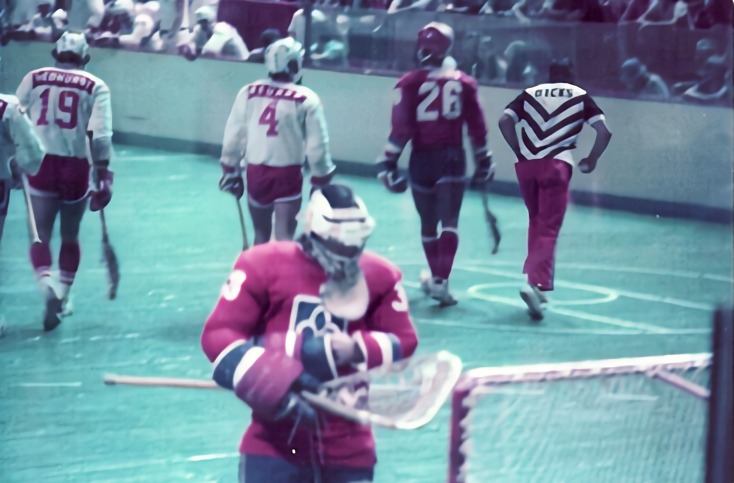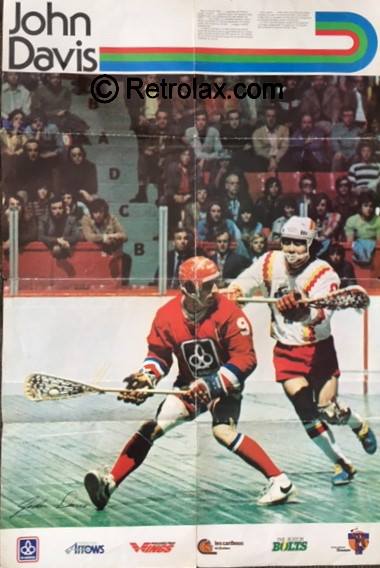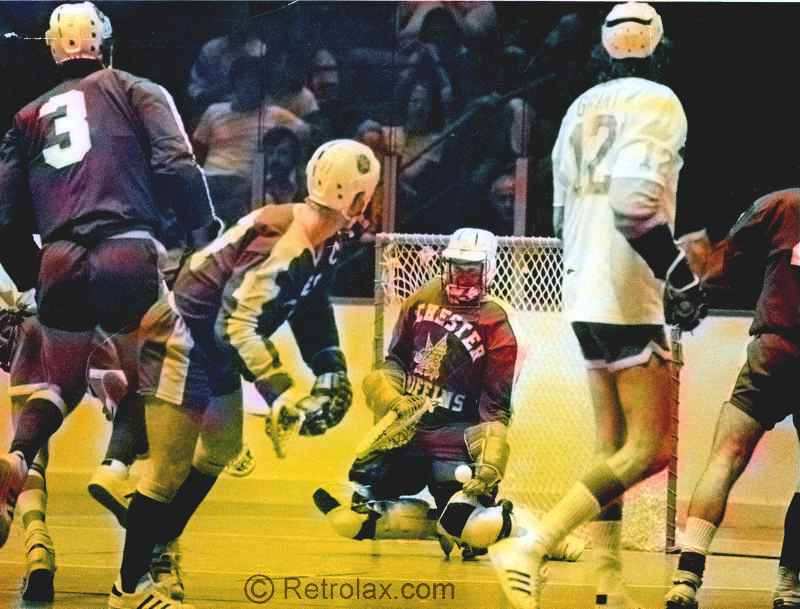By Joe Donnelly

Photo courtesy of Tom Wersderfer
Morley Kells was back home in Toronto yesterday. lamenting the fate of the National Lacrosse League. The coach and general manager of the Long Island Tomahawks went to a league meeting in Montreal last Friday hoping to buy time so he could gather fresh ownership for his club.
Instead, he learned that two other clubs— Boston and Montreal—in the six-team league were in as poor shape financially as the Tomahawks. The rational thing to do, the board of governors decided, was to fold the league. So Kells is back home looking for another job.
“We couldn’t get Montreal straightened out,” Kells said over the phone. “When they fell out of place, it was like a domino theory. Then Long Island fell . . . We were negotiating with a lot of little groups [to take over the club], but we didn’t have enough time to put something together.”
Kells summed up the failure of the Tomahawks in general-manager terms. “I had already made some trades,” he said. “I had traded my goalie. Merv Marshall, and I had picked up Billy Coghill from Maryland to plug up a hole in the defense. I guess the only hole I didn’t plug up was the hole in the owner’s spot.”
Kells learned that an owner with money is still a team’s “most valuable player.” Bruce Norris, who operated the Tomahawks last season, was not going to finance them again this year. “He wanted some partners, but he couldn’t get anybody on his terms,” Kells said. “So he backed off.
“Him pulling out was a fatal blow’. We had other owners in the league who were men of extreme wealth, but there was no one of Bruce’s sports stature [Norris operates the Detroit Red Wings]. I can’t say I blame him, because he lost more money in one year than he planned to lose in two.’

Photo courtesy of Tom Wersderfer
All that remains of the National Lacrosse League is an office in Montreal. “I’m completing an orderly closure of the league and expect to be out of here by March 1,” said Jerry Patterson, the president of the league. ‘‘What happened last Friday is that a group of businessmen got together and made a decision based on reason and not on emotion. I think more sports administrators will be doing this in the future.”
Rather than limp along, Patterson thinks the league acted intelligently in dissolving. “We were a six-team league,” he said. “Each had to be strong in terms of investment and financial backing. Some say. ‘Why didn’t die strong [teams] support the weak?’ That’s not a realistic business approach because the strong aren’t going to remain strong very long that way. There was no excuses, no malice. As businessmen, we decided to face facts.”
Perhaps it was his love of the game, the coach in him prevailing, but Kells said he would have preferred the other direction. “I think this year we would have made a bigger impact on the Maryland area and Philadelphia already had sold 3.000 [2,300] season tickets,” Kells said. “On Long Island I think we would have still lost money, but we would have begun to educate people about the sport … I just don’t feel we had a fair test of our product and I’m afraid we’ll never get another chance.”
There had been a rumor the league would be revived in 1977 but Kells dismissed it. “That’s just the last gasp of a dying man and somebody throwing him a bone,” he said.
One of the things Patterson insisted upon last Friday was that telegrams be sent to all the players informing them of the league’s demise before the press was told. “I’m sure they’re sad.” Kells said. “I’m sorry too . . . I’ve got to go to work for a living. I’m going to stay around here, in Toronto, and I’ve got some possibilities. Td like to keep lacrosse as a full-time hobby now instead of a full-time job. We’re scrambling around now, trying to put a semipro league together.”






